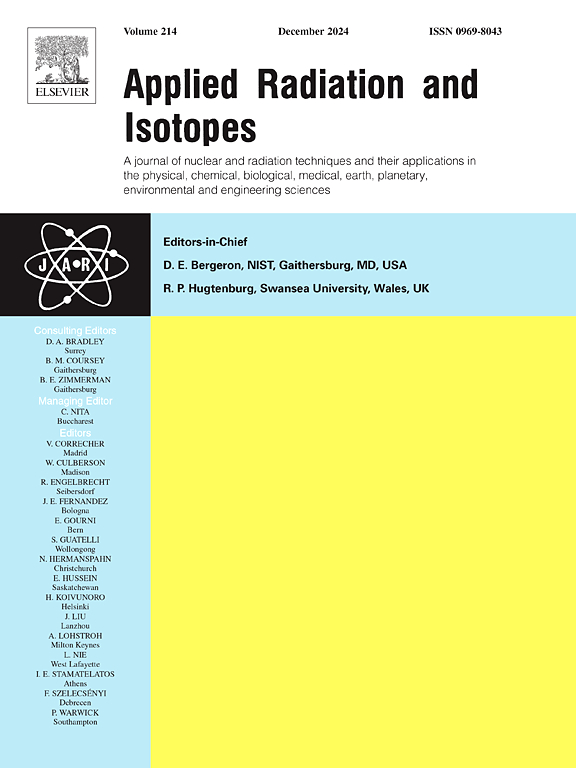Analysis of neutron induced reaction cross-section on 121,123Sb isotopes at neutron energy of 14.96 ± 0.03 MeV
IF 1.6
3区 工程技术
Q3 CHEMISTRY, INORGANIC & NUCLEAR
引用次数: 0
Abstract
The cross-section measurement of Antimony (Sb) is pivotal to modify or stagnate the rate of neutron flux in nuclear reactors. Neutron induced reaction cross-section data for isotopes of Sb is meagre as per reported in EXFOR. A comprehensive attempt has been made to analyse the reaction cross-section of 121Sb and 123Sb at monoenergetic neutron energy of 14.96 ± 0.03 MeV. The experiment was performed at the Neutron and Ion Irradiation Facility, Institute for Plasma Research (IPR), Gujarat (India). The 27Al(n,α)24Na reaction is used to monitor the flux and to estimate the cross-section of (n,2n), (n,p) reactions using neutron activation technique. Monoenergetic neutrons generated by D-T fusion reaction were bombarded on the natural sample of Sb to induce radioactivity. A High Purity Germanium detector (HPGe) with a resolution of 2.1 keV at 1.33 MeV γ-ray energy of 60Co based on GENIE software was used for the counting of emitted gamma photo peaks. Calculated results are compared with the existing studies from EXFOR. The cross-section values are estimated using TALYS-2.0 statistical code by employing different input parameters, along with the latest Evaluated Nuclear data libraries (ENDF/B-VIII.0, JEFF-3.3). To obtain more precise data, uncertainties from various parameters are propagated using the correlation coefficients among all the parameters. This systematic detailed covariance analysis helps to reduce the present discrepancies and to refine the nuclear data.
求助全文
约1分钟内获得全文
求助全文
来源期刊

Applied Radiation and Isotopes
工程技术-核科学技术
CiteScore
3.00
自引率
12.50%
发文量
406
审稿时长
13.5 months
期刊介绍:
Applied Radiation and Isotopes provides a high quality medium for the publication of substantial, original and scientific and technological papers on the development and peaceful application of nuclear, radiation and radionuclide techniques in chemistry, physics, biochemistry, biology, medicine, security, engineering and in the earth, planetary and environmental sciences, all including dosimetry. Nuclear techniques are defined in the broadest sense and both experimental and theoretical papers are welcome. They include the development and use of α- and β-particles, X-rays and γ-rays, neutrons and other nuclear particles and radiations from all sources, including radionuclides, synchrotron sources, cyclotrons and reactors and from the natural environment.
The journal aims to publish papers with significance to an international audience, containing substantial novelty and scientific impact. The Editors reserve the rights to reject, with or without external review, papers that do not meet these criteria.
Papers dealing with radiation processing, i.e., where radiation is used to bring about a biological, chemical or physical change in a material, should be directed to our sister journal Radiation Physics and Chemistry.
 求助内容:
求助内容: 应助结果提醒方式:
应助结果提醒方式:


